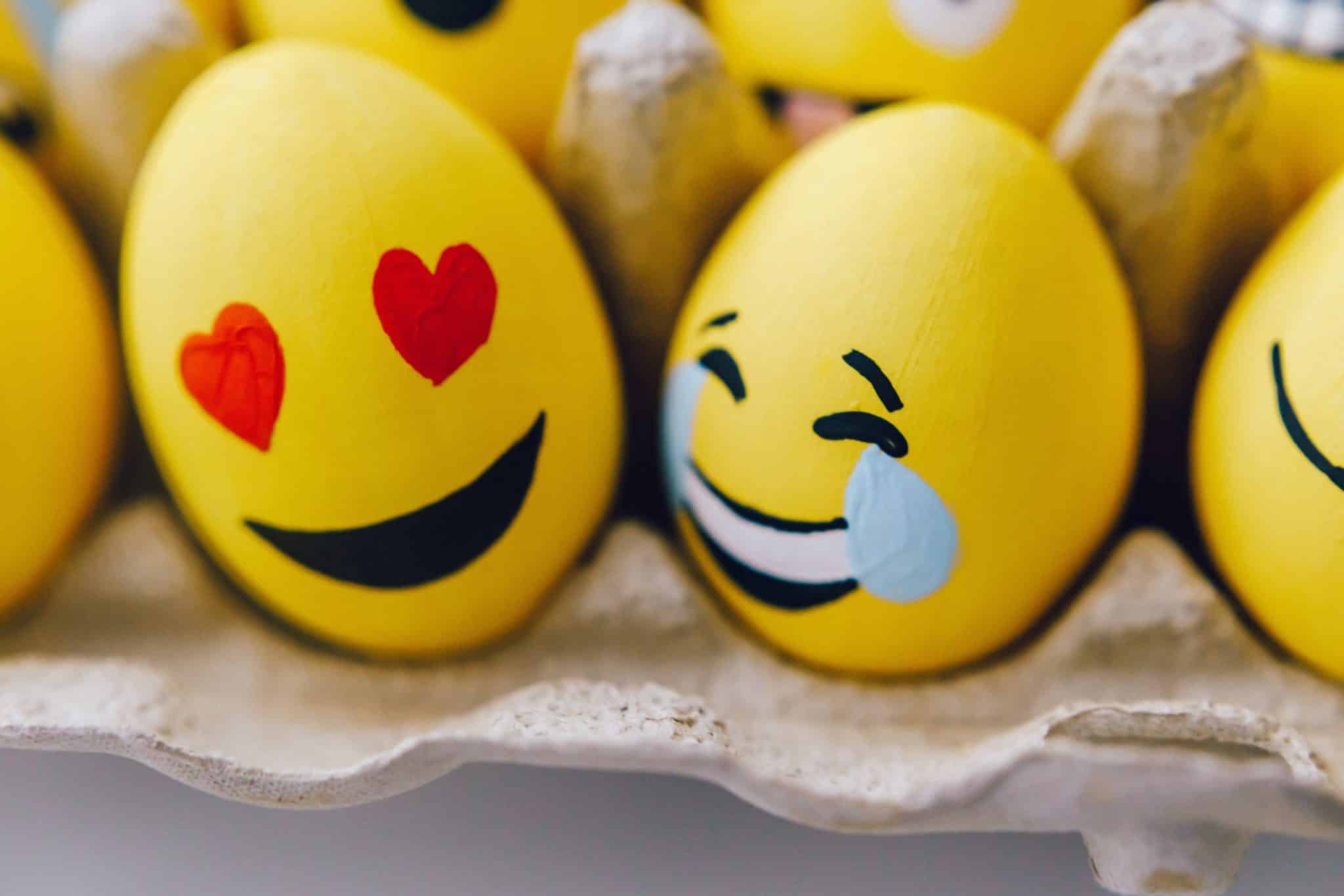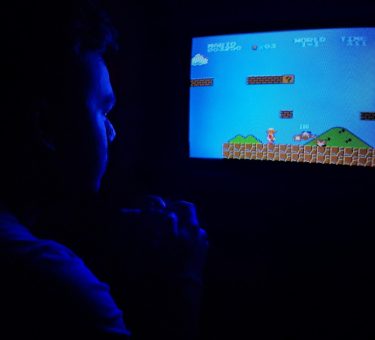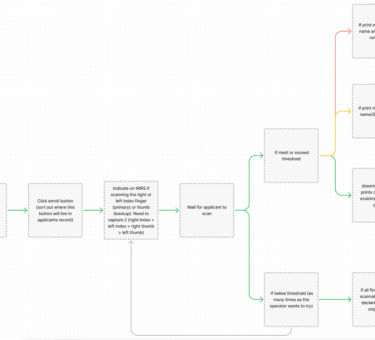If we were to think back on some of the most important moments of our lives, we would remember how we felt. When interacting with a certain product or service for the first time, we know how we feel. Those distinctive emotions affect us physically, and may even affect our behavior. It’s so easy to remember those moments and what they meant to us. However, have you ever considered the root of it all; what an emotion actually is?
Encompassing both positive and negative states, emotion isn’t easily encapsulated into words — but we all experience it. Both positive and negative emotions have the ability to benefit us.
The Relationship Between People and Things
Emotions shape relationships. The love you have for a product, service, or experience isn’t much different than the love you have for a specific shirt, fragrance, or your favorite plant. These emotions breed positive feelings which then beget meaningful attachments.
Positive emotional responses are often the result of factors that converge at the point of contact with a product or thing. Factors can include our disposition, drives, interpersonal relationships, personal characteristics/personality, or simply the thing or environment itself. When one or more of these factors converge, an attachment is made.
We develop positive attachments over time through continual use, changes in those factors, or changes in our personal circumstances.
On the contrary, we all remember that one product or thing that has driven us crazy: that application with a frustrating user experience, but a beneficial outcome. Although this product may be effective in some ways, the poorly designed user interface would induce a negative emotional response and the product would be deemed as an overall bad product.
“The quality of the user interface of an appliance is relatively unimportant in determining its adoption by users if the perceived value of the appliance is high.”
—Heckel’s Law (by N. Derett)
In other words, if a product offers a value that can’t be obtained anywhere else, the user will put up with it, bad user experience and all (although bad user experiences are never an option for a Designer!) Derett goes on to say that if we want to build products that will be used and adopted, it isn’t enough to develop products effective in one area. They must also: (1) satisfy the core demands and (2) provide an emotional response – positive or negative.
There is a fine line between positive and negative emotional responses. Successful products can evoke both positive and negative experiences – without the negative emotional responses, ideation wouldn’t be an iterative process.
The Product-Emotion Cycle
Emotion gives us value: It tells us what’s important and what isn’t, what we like and what we don’t, what’s urgent and what isn’t. As product designers we have an obligation to create products and experiences that users will want to interact with, those that they find important, ones they like and those that they are eager to use: products that are useful parts of their daily lives. It is our job to bridge the gap between product and behavior.
Relationships exist between users and the things and products they interact with. This relationship and the sequence of changes or events that occur from the user’s first interaction and emotional response with a thing or product is referred to as the ‘Product-Emotion Cycle’. This refers to the effect that a product or object has on a user, which influences the user’s behavior thereafter.
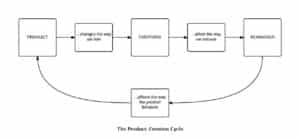
In the above diagram, the product induces an immediate emotional response from the user. This interaction triggers an emotion from the user, which affects the way the user behaves with the product. The cycle then continues when the user’s behavior influences the way the product behaves. This is an ongoing cycle until the user stops interacting with the product. Throughout the cycle, there can be multiple emotional states during the process of interacting with a product. The relationship between the user and the product changes, and the actions of both the user and product influence changes in response to each other.
Experience and Emotion
User experience has become a buzzword in the design and technology industries. Alan Dix, Professor of Human-Computer Interaction says that when creating products and designing for user experience you must focus on usability. As user experience has become increasingly important it plays a major role in design as a whole.
Experience matters. Let’s consider the first brick-like mobile phones vs. the iPhone. The first phones were about the basic function of communication and being connected to people. Conversely, the iPhone is about beauty, design, modernism and the community that comes with being an iPhone user. Who remembers the emotion attached to owning their first cell phone? Weren’t you excited, proud, maybe a little bit boastful? Whether it was a flip phone or a Blackberry, just the mere possession and interaction with the phone catapulted us into a world we’d never experienced before that point; a world where a phone said something about who you are.
Emotion matters. People cling to a product because they want it to make them feel things. They want there to be a sense of excitement or interest. Emotion is a part of being human. Without emotion we wouldn’t fully exist. The products we use every day, the services we love, the experiences we get lost in, they set the standard for our everyday lives.
In these times, with a rise of professionals working from home, we hold our products and user interfaces to a high standard. They must focus on:
- Effectiveness: Does it do the right thing? Does it get important things done?
- Efficiency: Does it do the above with minimum effort, mental and physical?
- Satisfaction: How does it make you feel? Happy? Good?
With satisfaction becoming increasingly important in user experience, it is evident that emotions are not only a part of daily life but also key to the bottom line in a business. Emotional design of a product or service affects its success and keeping users’ and customers’ satisfaction at the center of the process is crucial.
Designing With and For Emotion
Emotional design is the creation of designs that evoke emotions that result in positive user experiences.
“People don’t buy what you do, they buy why you do it.”
– Simon Sinek, Author of Start With Why
Operating from this place of why is the root of emotional design, in my opinion.
As product designers, our work is focused on the user’s needs, their wants, their desires, what makes their lives better, what makes them happy… while simultaneously considering their responses. We tap into our own emotions and intuition when creating the emotions of others. Emotion and cognition go hand in hand. Positive experiences drive curiosity, while negative experiences help us prevent repeated mistakes.
According to Donald Norman of the Nielsen Norman Group, designers must appeal to users on three cognitive levels:
- Visceral: the emotions we are born with; the users’ gut reactions to or their first impressions of your design
- Behaviors: the users’ subconscious thoughts of how a design helps them achieve goals; how easily, without effort; users should feel in control
- Reflective: Consciously review the past or think of the future after encountering a design. What is the performance like? What are the benefits? What is the value?
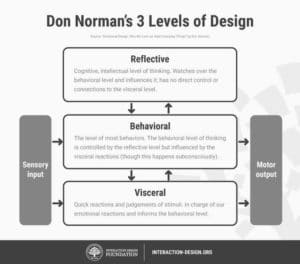
Fostering Emotional Connections
There is power in emotion. As humans we have the capacity for emotion to inform and determine our experience of and with the world, how we navigate it and the relationships we forge with products and things. Emotions become associated with things, products, people, places, etc. Once this bond between a person and a product is created and we enter a psychophysiological state, simply seeing, tasting, or touching the product will evoke an emotion. If a user had a positive experience with a product during the first interaction, it is likely that they will want to experience that again.
As designers we strive to create products that encourage positive emotional associations and connections. Every consideration, decision, and outcome during the design process has the ability to make people feel something, including visuals, copy, tone, and usability. We tap into human psychology and we’re able to curate the experience we want the user to have.
It is important that we consider the following factors when designing:
General Factors:
- Human cognition: The way we think, learn, solve problems, make decisions, and consume information.
- Human psychology: The science of mind and human behavior. While humans and emotions are subjective, it is important to try to induce a similar emotional response from one person to another.
Specific Factors:
- Culture: Cross-cultural and market considerations in design are important. Designers must research and develop products according to the dominant culture, while remaining as sensitive to the specific ‘micro-cultures’ as possible in the final product.
- User’s psychological and physical qualities: Consideration of user base to foster accessibility and inclusive design.
- Dispositional factors: Considering how the user is likely to feel at the time of using a particular product. Usability and visual considerations are important here depending on your user base.
- Situational factors (context of use): Where will the product be used? How will the product fit into the user’s life? Considerations include space, light, privacy, and usability.
Emotions are complicated and context-specific, and can be affected by our disposition, personality, and other personal factors. Emotional connections to products, things and experiences guide our behavior and influence how we perceive the world. Designers must create products that encourage positive emotional connections between users and products — while also taking into account negative emotional connections to better the product or experience. We must consider both general and specific factors that impact our users and are specific to our product. We must use the principles and processes of emotional design to understand how our users feel and what affects those feelings. In the words of Don Norman, “We can’t put emotion into the product or service, emotions are in the minds and bodies of the people. We must make a product or service that delivers in the person the emotions we care about – it’s an art.”
References :
Learn more about emotional design by taking the Interaction Design Foundation course
https://www.interaction-design.org/literature/topics/emotional-design
https://www.nngroup.com/books/emotional-design/
Norman, Donald A. The Design of Everyday Things. Basic Books, 2013.
Derrett, N. (2004). Heckel’s law: conclusions from the user interface design of a music appliance—the bassoon. Personal and Ubiquitous Computing, 8(3-4), 208-212.





